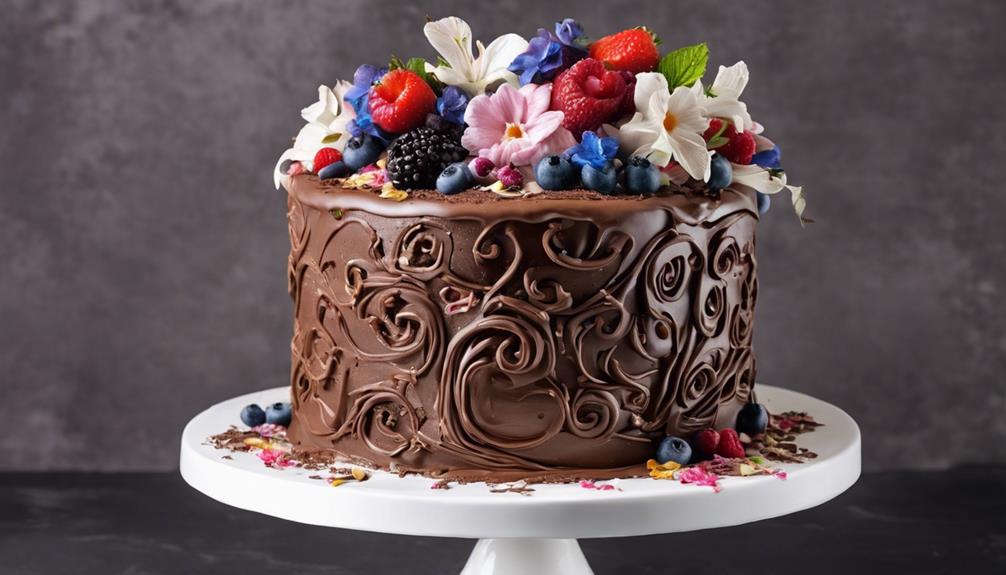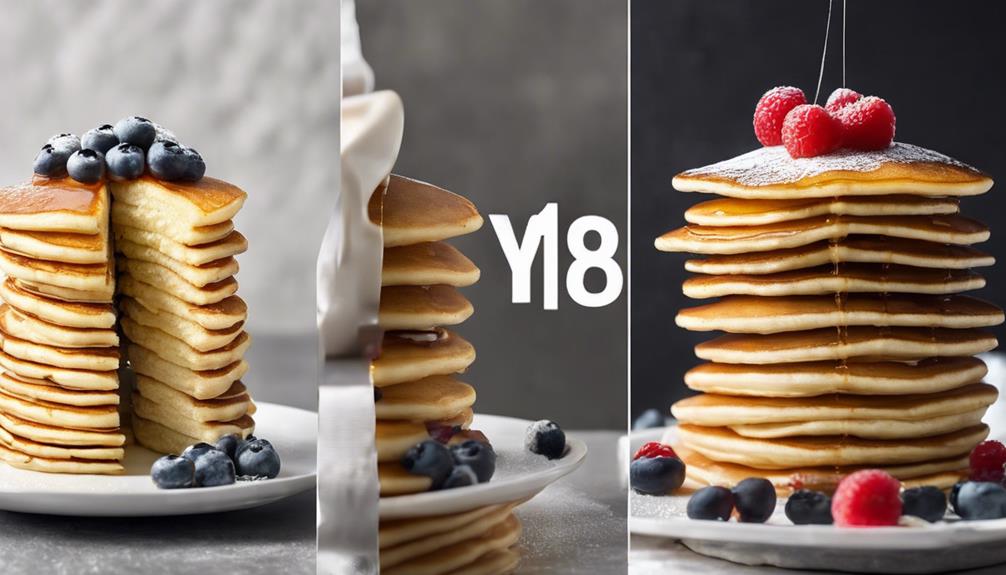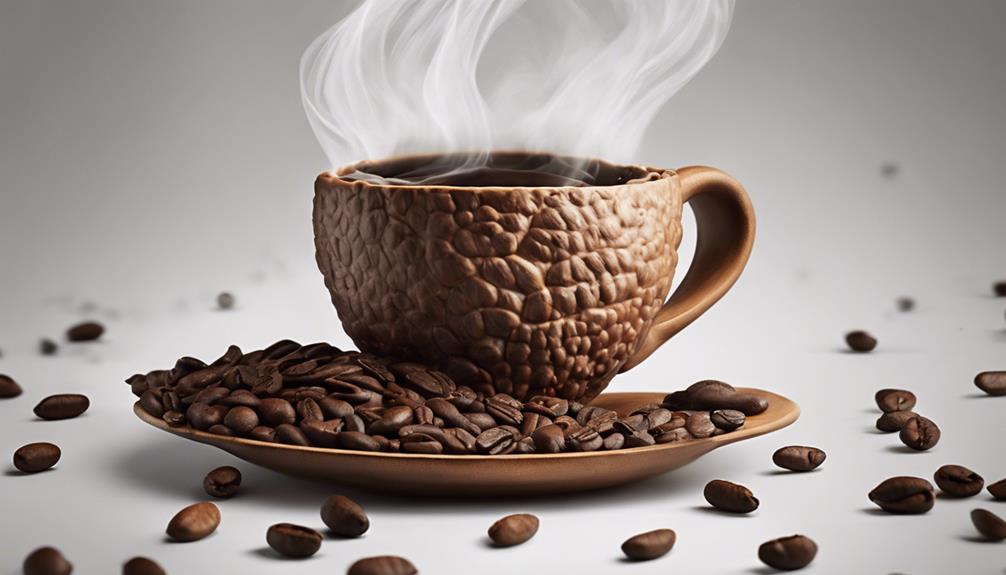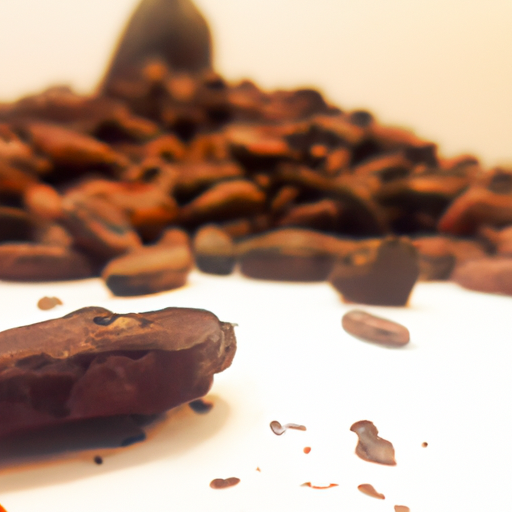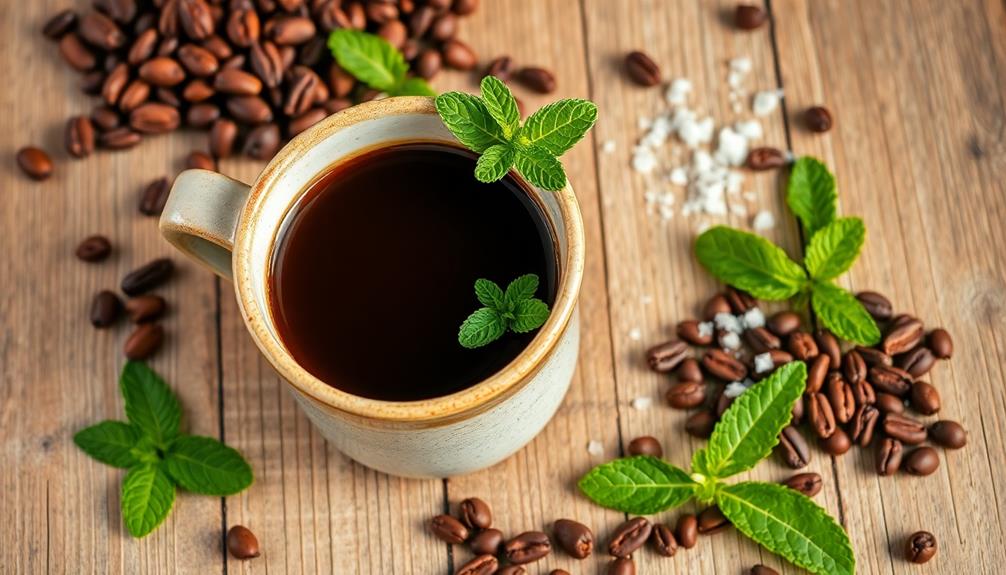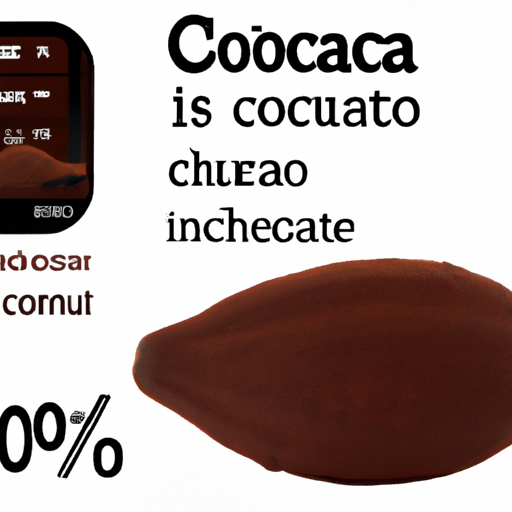When preparing a tasty chocolate cake, consider using simple methods of decoration to elevate its look and taste. Begin by utilizing a classic chocolate ganache drip to add an element of sophistication; remember, the consistency should be smooth for a refined finish. Next, perfect the art of piping with whipped chocolate frosting to create decorative swirls; practice on parchment paper for precision. Remember to incorporate chocolate shavings and fresh berries for both variety and contrast on the cake. For a more dainty touch, embellish your masterpiece with edible flowers, ensuring they are safe for consumption. Lastly, experiment with the cocoa powder dusting technique to add intricate patterns to your cakes.
By using these techniques, your chocolate cake will not only look stunning but taste incredible too – they truly elevate your cake to the next level of refinement.
Key Takeaways
- Use chocolate shavings and fresh berries for a vibrant and elegant cake decoration.
- Incorporate whipped chocolate frosting piping for intricate and light designs.
- Opt for edible flowers to add color and delicate flavor to chocolate cakes.
- Enhance cake presentation with cocoa powder dusting for beautiful patterns.
- Experiment with toppings like fruits, chocolate curls, and edible glitter for visual appeal.
Classic Chocolate Ganache Drip Design
When creating a classic chocolate ganache drip design, achieving the perfect consistency is essential for a visually stunning cake decoration. The chocolate ganache drip is a beloved technique in cake decorating that adds a touch of elegance and decadence to any chocolate cake.
To master this art, one must focus on achieving a smooth consistency in the ganache. This means finding the balance between a ganache that isn't too runny, which would result in a messy drip, and not too thick, which wouldn't flow gracefully down the sides of the cake.
The temperature of the ganache also plays a vital role in ensuring that it flows smoothly and evenly over the cake. By paying attention to these details and practicing the technique, you can create beautiful chocolate ganache drip designs that will impress both cake decorators and dessert enthusiasts alike.
Whipped Chocolate Frosting Piping
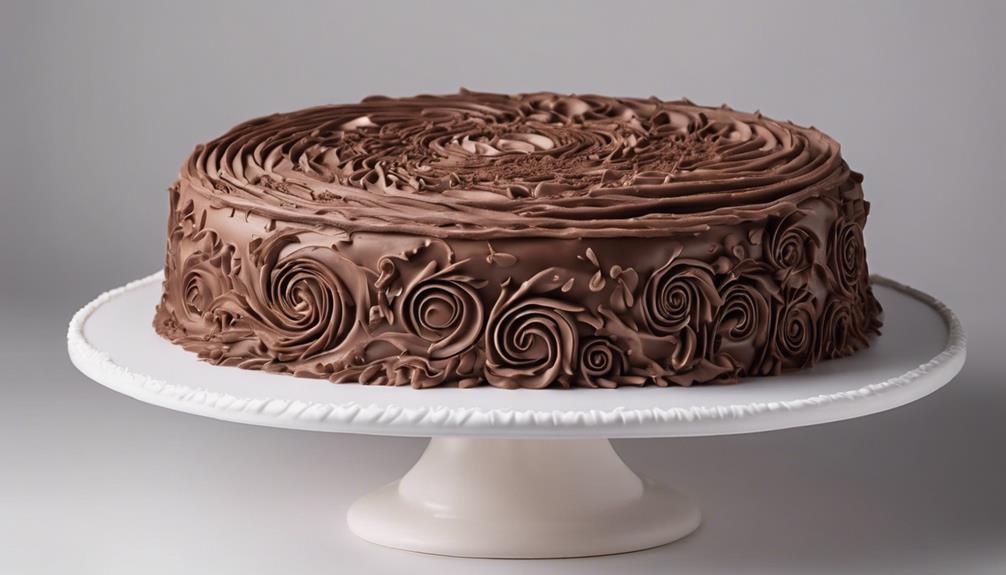
When it comes to whipped chocolate frosting piping, the key is to master piping techniques for creating decorative chocolate swirls.
This involves controlling the frosting's texture to achieve smooth lines and intricate designs on your cakes.
With practice and patience, you can elevate your cake decorating skills by using whipped chocolate frosting for piping beautiful and delicious creations.
Piping Techniques Overview
Using a piping bag filled with whipped chocolate frosting, I can create intricate designs on cakes effortlessly. Here are some tips for mastering piping techniques with whipped chocolate frosting:
- Whipped chocolate frosting is light and airy, perfect for piping delicate designs.
- Different piping tips can be used to achieve various textures like stars, shells, and swirls.
- Practice piping on parchment paper first to guarantee accuracy.
- Whipped chocolate frosting holds its shape well when piped, ideal for detailed decorations.
- Create beautiful borders, rosettes, and decorative elements on your cake using these techniques.
Decorative Chocolate Swirls
Creating decorative chocolate swirls on a cake using whipped chocolate frosting piping adds a delightful touch of elegance to the dessert presentation.
To achieve this, fill a piping bag fitted with a star-shaped tip with delicious chocolate frosting. Starting from the outer edge of the cake, gently squeeze the piping bag while swirling in a circular motion towards the center. Vary the size and shape of the swirls to create an eye-catching design.
This technique not only adds texture and dimension but also enhances the visual appeal of chocolate cakes. The intricate patterns formed by the whipped chocolate frosting piping elevate the overall look, making the cake a centerpiece at any event.
Enjoy the process of decorating and savor the final result!
Chocolate Shavings and Berries
When decorating a chocolate cake, chocolate shavings and fresh berries are key elements.
Chocolate shavings add a delightful texture, while the fresh berries provide a vibrant contrast.
Together, they elevate the cake's appearance with elegance and flavor.
Shavings for Texture
To enhance the texture and visual appeal of decorated chocolate cakes, consider incorporating sumptuous chocolate shavings and vibrant berries into the design. Here are some ideas to elevate your cake decoration game:
- Chocolate shavings: Use a vegetable peeler to create delicate chocolate curls for a touch of elegance.
- Berries: Fresh raspberries, blueberries, or strawberries add a burst of color and freshness to your chocolate creation.
- Vegetable peeler: Make intricate chocolate curls by gently peeling a chocolate bar with a vegetable peeler.
- Chocolate curls: Delicately crafted chocolate curls can elevate the sophistication of your cake design.
- Combination: Mixing chocolate shavings with fresh berries creates a visually stunning and decadently delicious decoration for your chocolate cakes.
Fresh Berries Contrast
Fresh berries burst with vibrant color, complementing the rich chocolate shavings on a decadent cake.
When you adorn your chocolate cake with a variety of fresh berries like raspberries, blueberries, and strawberries, you not only enhance its visual appeal but also introduce a delightful contrast of flavors.
The deep, luscious tones of the chocolate shavings against the bright hues of the berries create a stunning presentation that will leave your guests in awe.
The combination of the smooth chocolate cake, the juicy burst of the berries, and the delicate texture of the shavings is visually appealing and tantalizing to the taste buds.
Elevate your dessert game by incorporating this simple yet elegant decoration idea.
Presentation With Elegance
Combining chocolate shavings and fresh berries on a cake creates an elegant and visually striking presentation. When you sprinkle chocolate shavings over the top of a chocolate cake, it instantly elevates the dessert to a whole new level of sophistication.
The addition of fresh berries not only adds a pop of color but also brings a burst of freshness that complements the decadent flavor of the chocolate. Here are some tips to achieve a sophisticated look with chocolate shavings and berries:
- Use a vegetable peeler to create delicate chocolate shavings for an elegant touch.
- Choose a variety of fresh berries like raspberries, blueberries, or strawberries for a colorful contrast.
- Arrange the chocolate shavings and berries strategically on the cake for a visually appealing presentation.
- Experiment with different patterns and designs to enhance the overall look of your dessert.
- Enjoy the combination of textures and flavors that chocolate shavings and berries bring to your cake.
Edible Flower Decoration
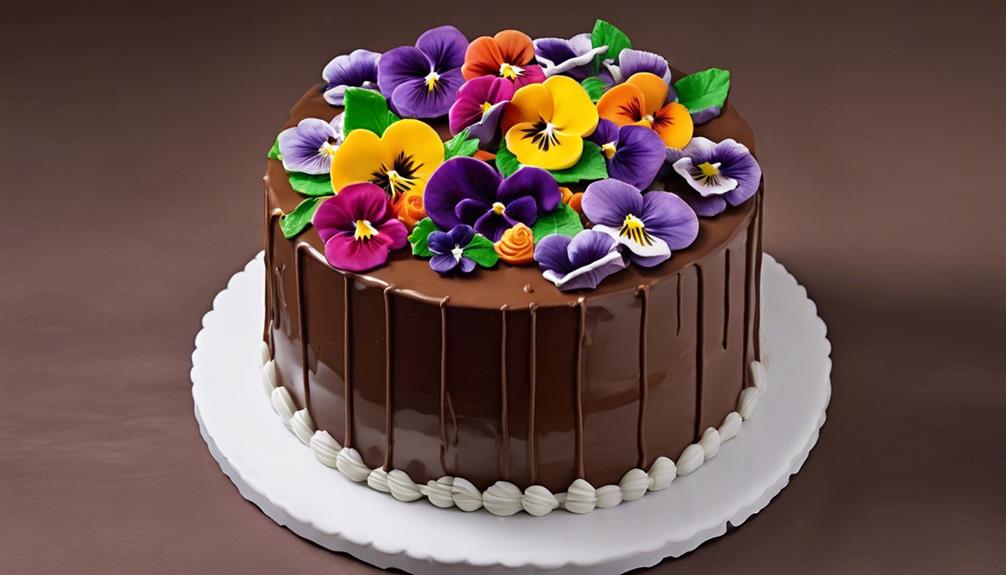
For a vibrant and natural touch, consider adorning your chocolate cake with organic and pesticide-free edible flowers like pansies, roses, and violets. Before decorating, verify the flowers are safe to eat by confirming they're organic and free from pesticides.
To maintain their freshness, gently wash the flowers and pat them dry before placing them on the cake. Edible flowers can be strategically placed on top of the cake or around the edges for a beautiful and elegant presentation.
Not only do these flowers add a pop of color, but they also bring a delicate flavor that complements the richness of the chocolate cake, enhancing its overall appeal. When selecting edible flowers for decoration, opt for varieties that are known to be safe for consumption.
With these organic blooms, you can create a stunning masterpiece that not only looks exquisite but also tastes delightful.
Cocoa Powder Dusting Technique
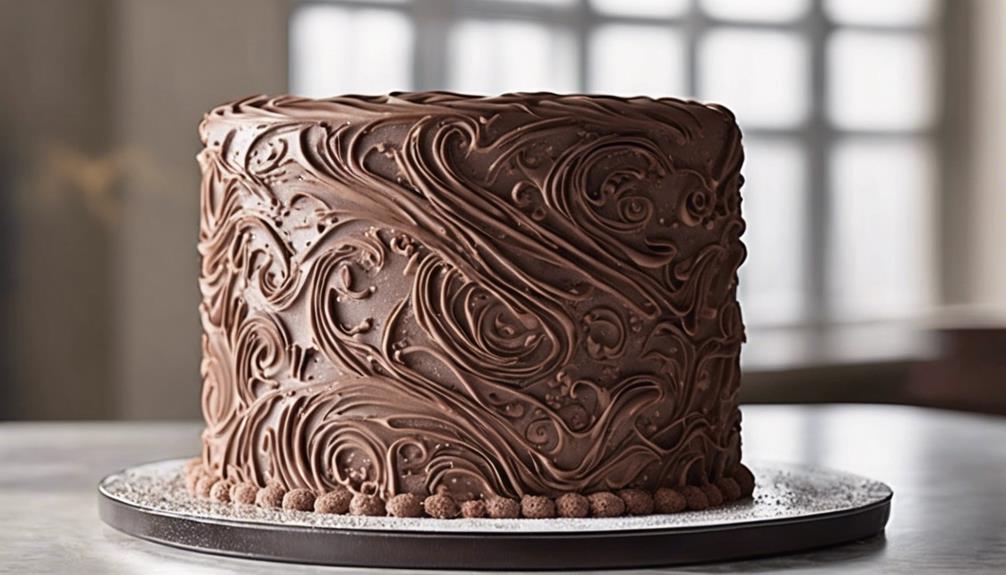
To enhance the visual appeal of your chocolate cake, consider utilizing the cocoa powder dusting technique to create intricate designs or patterns on its surface.
- By sifting cocoa powder over a stencil onto the cake, you can achieve beautiful designs effortlessly.
- This technique not only adds a decorative touch but also enhances the chocolate flavor of the cake.
- Cocoa powder dusting is a popular choice for chocolate cakes as it elevates both taste and appearance.
- It's a simple yet effective way to enhance the presentation without making the cake overly sweet.
- Using different stencils or templates allows you to customize the cocoa powder dusting for various themes or special occasions.
Give your chocolate cake a professional and artistic touch by mastering the cocoa powder dusting technique. It's a fun and creative way to make your cake stand out, perfect for impressing friends and family with your baking skills.
Creative Chocolate Cake Toppings
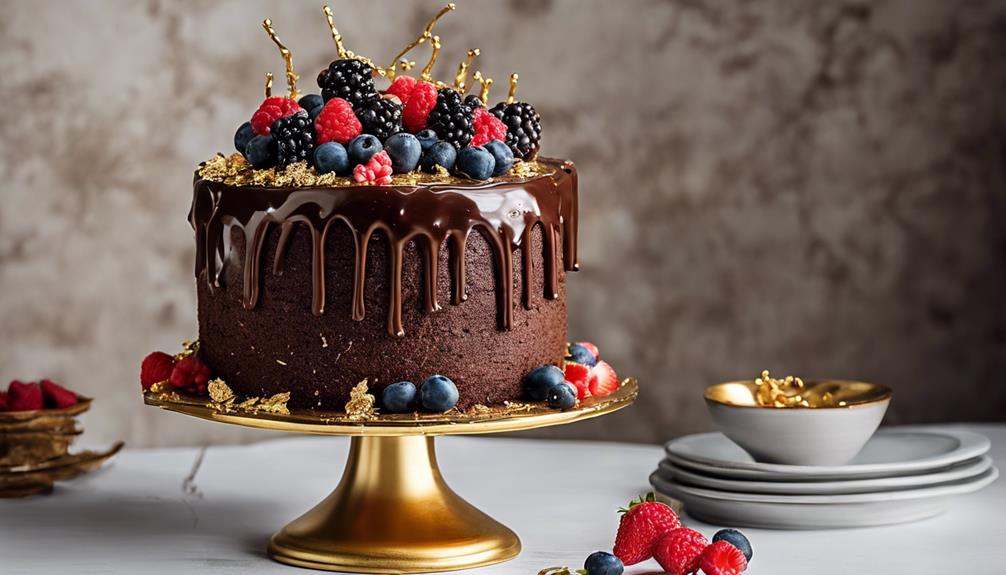
Adding a burst of color and flavor, fresh berries like strawberries and blueberries are delightful options as creative toppings for chocolate cakes. These vibrant fruits not only provide a visual pop but also offer a invigorating contrast to the rich chocolatey taste of the cake.
Another elegant choice for decorating your chocolate masterpiece is to create chocolate curls using a vegetable peeler. These delicate curls add a touch of sophistication and a hint of decadence to the dessert.
For those looking to add a bit of sparkle and glamour, sprinkling edible glitter or gold leaf on top of the cake can elevate its appearance to a whole new level of luxury.
Additionally, whipped cream rosettes piped on the cake create a light and airy decoration that complements the dense chocolate texture.
If you prefer a bit of crunch and nuttiness, consider adding almonds or hazelnuts as toppings for a delightful contrast in both flavor and texture. Whether you opt for a simple buttercream frosting or a luxurious chocolate ganache, these creative toppings will surely impress your guests and make your chocolate cake a showstopper.
Frequently Asked Questions
How to Easily Decorate a Chocolate Cake?
I can easily decorate a chocolate cake by using a piping bag for intricate designs, experimenting with frosting tips for different textures, and adding chocolate curls or edible glitter. Fresh berries or citrus slices provide a pop of color.
What Can I Top a Chocolate Cake With Besides Frosting?
I love topping my chocolate cake with fresh berries for a burst of fruity flavor. Nuts add a satisfying crunch, while edible flowers make it visually stunning. Chocolate shavings bring elegance, and colorful sprinkles add a fun touch.
What Type of Cake Is Easiest to Decorate?
When it comes to cake decorating, simplicity is key. A naked chocolate cake is the easiest canvas to adorn. Minimal frosting, elegant decorations. Let's make it effortless and delightful. Let's create magic with ease.
How Do You Make a Simple Cake Look Fancy?
To make a simple cake look fancy, I add creative decorations like edible flowers, chocolate shavings, or fondant art. Experimenting with various designs such as drip cakes, naked cakes, or themed cakes elevates the cake's appearance while keeping it delicious.
Can I Use Chocolate Paste for Decorating Cakes?
Yes, you can use chocolate paste for decorating cakes. The chocolate paste recipe technique involves melting chocolate and mixing it with other ingredients to create a smooth and pliable paste. This can be used to pipe intricate designs, create 3D decorations, or cover the entire cake for a delicious and decorative finish.
Conclusion
Indulge in the world of chocolate cake decorating with these easy and creative ideas.
From classic ganache drips to whipped frosting piping, there are endless possibilities to make your cake look stunning.
Whether you prefer chocolate shavings and berries or edible flower decorations, there's something for everyone.
With a sprinkle of cocoa powder or unique toppings, you can elevate your cake to a whole new level of deliciousness.
Let your imagination run wild and create a masterpiece that will impress everyone at the party.

